June 2 - 8, 2019: Issue 407
Careel Creek Bushcare Group
1990 To 2019
Careel Bay Restoring Sydney Freshwater Wetlands Bushcare Group - Final Field Day - May 25th, 2019
Careel Creek days coming up are: June 22, July 27, August 24, September 28, October 26, November 23.
Great for those who want to see their efforts 'grow', literally, and for those doing their Duke of Edinburgh award. You will also get to be amongst a great group of people and see some of the resident fauna being attracted back to our area through your efforts.
Below runs an overview of what's been done so far courtesy of the Pittwater Natural Heritage Association, Oceanwatch and the Hawkesbury-Neapean Catchment Management Authority, Greater Sydney Local Land Services and Council:
Careel Creek
Geological History
The familiar coastal landscapes of the Northern Beaches have developed quite recently in geological time. The earlier coastline during the last glaciation was about 20 kilometres to the east. Today’s familiar beaches and estuaries developed as a result of sea level rise as the ice age ended, about 10 000 years ago. The sea reached its present level about 6000 years ago.
Many beaches along the NSW coast are (or were) backed by dunes with a wetland, lagoon or creek behind the dunes, into which the hinterland drains. Typically the lagoon opens periodically to the ocean. The opening generally is where dunes are lowest, at the north end of the ocean beach. Southerly ocean currents and winds carry sand northwards until blocked by a rocky headland. Narrabeen Lagoon and beach is a typical example. ICOLL is the acronym geologists give to this landscape feature – intermittently closed and open lake or lagoon.
Avalon Beach and Careel Creek, before European settlement, would have been a similar landscape formation. However, the catchment of Careel Creek is much smaller than that of many along the coast, bounded by the ridges of Avalon Golf Course, Bilgola Plateau, the rise towards Clareville, Stapleton Park and the slopes near Kevin Ave and George St. The creek behind the dunes was quite wide and shallow and would have retained water much like a coastal lagoon particularly after heavy rainfall events. But perhaps there never was enough water flowing down the creek to force its way through dunes. Also, the lie of the land is lower towards Pittwater so the creek flows into the receiving waters of Careel Bay.
Careel Creek since European settlement
The name Careel is thought to be a corruption of the word Careen – the hauling ashore of boats for maintenance and to clean the hull of marine life. The earliest recorded European settlement at Careel Bay occurred in 1818 with the area developing as farm land. Europeans came to the area not just to farm but as fishermen, vegetable gardeners, shell diggers, small boat builders and coastal traders. More about Careel Bay: (Careel Bay Org History)
In the early days of settlement, about 1840-1880, the Collins family had a dairy farm at Careel Bay. It occupied most of North Avalon. They leased the land from Father Therry. The creek was dammed just south of the present North Avalon Rd to ensure a supply of freshwater. It had an earth wall, with a spillway on the western side. Below the dam Barrenjoey Rd crossed the creek. A 1930 aerial photo indicates the dam was well and truly gone but had left a strange “kink” in the creek.
In the 1940s Bill McDonald, a prominent citizen of early Avalon, was able to paddle his surf ski up to the shops, when the tide was high and especially after a heavy downpour. This would have been before the creek behind the dunes was turned into an open concrete drain.
Careel Creek – or Avalon Main Drain?
The catchment of the creek has been progressively urbanised. With settlement come increased and sudden flows of stormwater off the hard surfaces of roads and roofs. Avalon shopping centre is almost at sea level. Flooding has been a problem, particularly when heavy rain coincides with high tides.
One early solution to this was to turn the upper section of Careel Creek into a concreted open drain, in the hope of speeding the flow of stormwater which would have been impeded by the wetland and vegetation downstream. Pittwater Council staff believe the concrete drain was installed when Barrenjoey Rd was widened in the 1960s.
To reduce risk of flooding in 2005 a stormwater detention basin was installed in the grassed area beside Old Barrenjoey Rd and the drain under North Avalon Rd widened (2008).
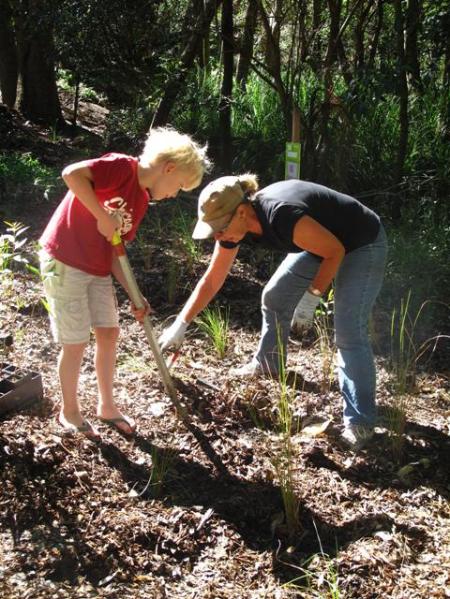
Above: Planting near the creek at Etival St.
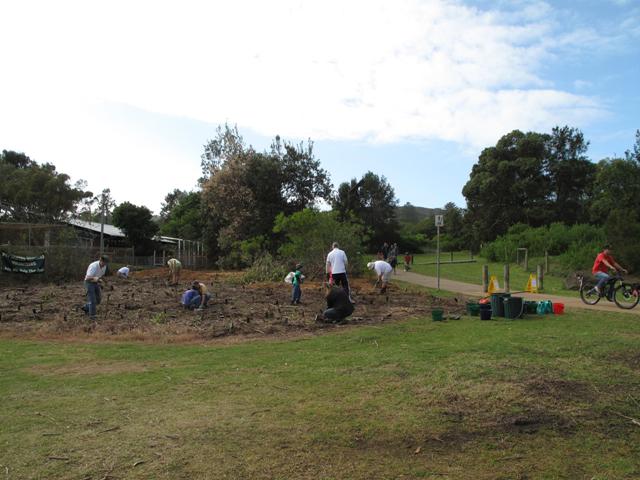
Above: Bushcare volunteers planting tubestock in November 2011
Water Quality
Another effect of urban development has been a deterioration in water quality in the creek. Wetlands are natural filters for organic and mineral sediments and plant nutrients such as phosphorus. The concrete drain allows any pollutants in the catchment wash straight down the creek. A Gross Pollutant Trap near the eastern end of Central Rd catches large items such as plastic bottles and other rubbish, also larger organic material such as leaves. However water quality is not suitable for swimming.
The concrete drain ends near alongside the Barrenjoey High School fence. Then the creek’s banks and bed are of mud and sand. Occasionally the creek’s lower reach gives off strong unpleasant sulphurous smells. Pittwater Council undertook investigations into the odours from the creekline and has determined that the source of the smell is natural anaerobic decomposition of leaf litter and other organic matter washed down the creekline.
Dredging to reduce flooding and smells is not an option because of the presence of acid sulfate soils. Like sleeping dogs, these must be let lie. Acid Sulfate Soils occur naturally in both coastal (tidal) and inland or upland (freshwater) settings. Left undisturbed, these soils are harmless, but when excavated or drained, the sulfides within the soil react with the oxygen in the air, forming sulfuric acid. This acid, together with associated toxic elements (heavy metals and other contaminants), can kill plants and animals, contaminate drinking water and food such as oysters, and corrode concrete and steel. This would be a disaster for Careel Bay.
Careel Creek, Avalon Dunes & Careel Bay
These areas offer valuable habitat to wildlife, all the more so if they are connected. Avalon Dunes was once infested with Bitou Bush, the creek’s banks with various woody weeds and Careel Bay’s saltmarsh areas were under attack from Asparagus Fern and other weeds.
Since 1990 ongoing bush regeneration projects have enabled local native vegetation to replace the weeds and recreate valuable fauna habitat. To provide this link to Careel Bay, Careel Creek’s banks are being progressively revegetated with local native plants.
Revegetation work in 2012 along the section from the sewer pumping station to North Avalon Rd was funded by a Community Action grant to Pittwater Natural Heritage Association, in partnership with Pittwater Council. The grant is from the Federal Government via Hawkesbury Nepean Catchment Authority. Students from Barrenjoey High School, Avalon Public School and community volunteers helped with planting tubestock here.
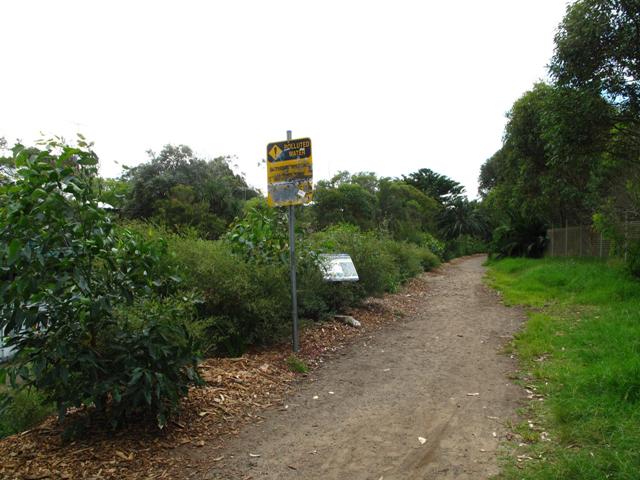
Trees & shrubs are growing fast. Swamp Mahogany (Eucalyptus robusta) will provide winter food for honeyeaters and lorikeets.
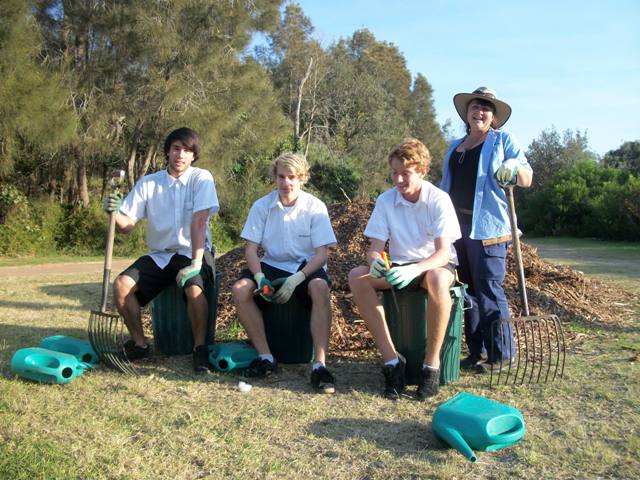
Duke of Edinburgh Award 2012 participants from Barrenjoey High School: Robert Rufatt, Michael Zonneveldt, Rory Wilkins and Sonja Elwood, Bushcare Lady, Pittwater Council. 17.5.2012.
Fauna
Birds often seen along the creek include: Pacific Black Ducks, Australian White Ibis, Little Pied Cormorant, White-faced Heron. Unfortunately many of the ducklings are eaten by large eels. As native plants grow small birds such as Superb Wren, Spotted Pardalote and White-browed Scrub Wren will forage for insects there. Watch for the mud nests of Magpie Larks in the trees on the western bank.
The Bush Stone-curlew is an endangered species in the Sydney area, but breeds in Careel Bay. During 2011 one was often seen along the creek or nearby. This bird needs open woodland or saltmarsh, with fallen branches to hide among, as it relies on camouflage to protect itself and its nest on the ground.
Schools of small fish, perhaps mullet, come upstream to the start of the concrete. The highest tides push upstream to about this point. So despite the poor water quality from a human perspective, at least some fauna find it acceptable.
The walking track from Avalon to North Avalon, the “Yellow Brick Road”, swings eastwards around the dunes before the sewer pumping station. But an informal track continues along the east bank of the creek. By a quirk of past subdivision, the rear boundaries of some Elaine Ave properties adjoin the western high school boundary in midstream. So this track is actually on school property.
Unfortunately much of the western creek bank here is private property and very weedy. We can but hope for future improvements.
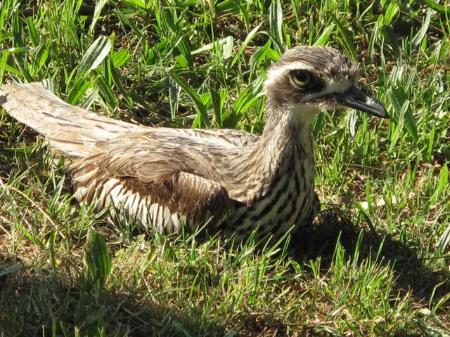
Above: Stone Curlew, October 2011.
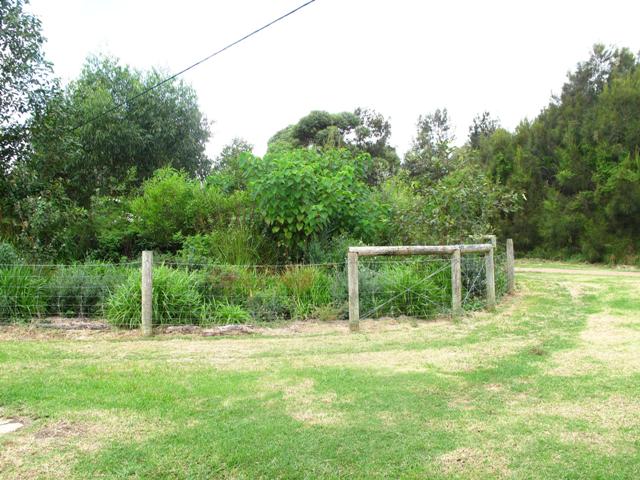
Trees planted near sewer pumping station, March 2012
More Information:
Map of Careel Creek Catchment: at Pittwater Council
Acid sulphate soils: http://www.clw.csiro.au/acidsulfatesoils/
Compiled by Marita Macrae, Geoff Searl and Paul Hardie.
Oceanwatch And Hawkesbury-Neapean Catchment Management Authority Healthy Waterways Clean Up Day At Careel Bay: In December 2012
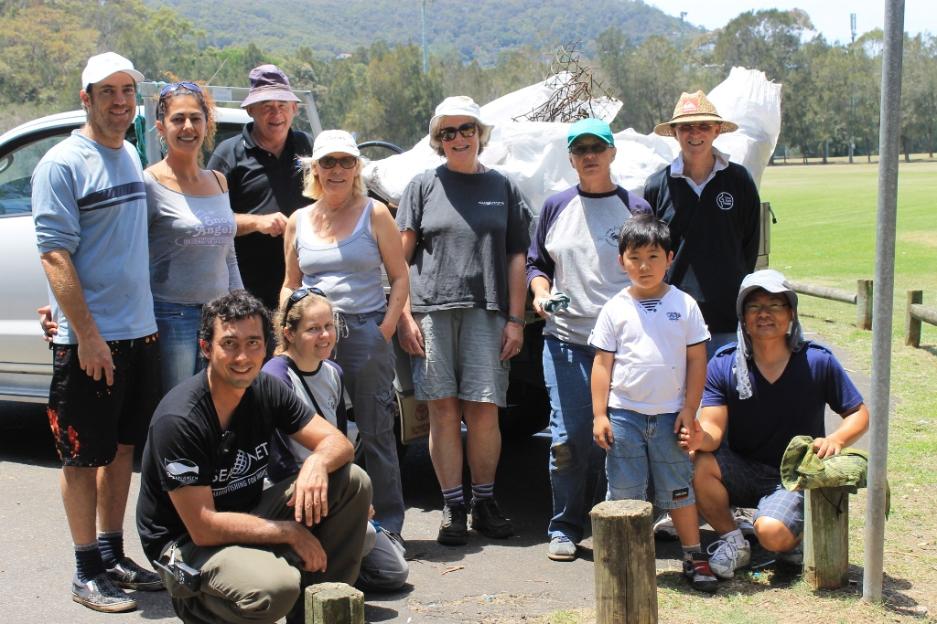
Some of the Pittwater residents who cleaned up Careel Bay Creek and Bay and its surrounds on Saturday morning in front of the ute filled with rubbish. Photo by A J Guesdon.
Oceanwatch And Hawkesbury-Neapean Catchment Management Authority Healthy Waterways Clean Up Day At Careel Bay
For over thirty years one staff member has been collecting rubbish from our estuary foreshores, along the beaches and in the rock platforms that separate these. The 1980’s this was mainly paper rubbish deposited every foot of the beach and most rubbish would be collected after Summer weekends when those who don’t live here think someone is being paid to collect their laziness or couldn’t carelessness. In the last decade or more the refuse has become increasingly plastic bottles, caps and bags, stryrofoam, or shining packaging like that on potato chips that may be mistaken for silvery fish by aquatic creatures and waterbirds. Some days garbage bags full were collected, on other days only one or two filled to the brim. No matter how much is collected though this is a tide, that unfortunately, keeps coming to shore as though the ocean and estuary are saying “You can have that back.”
On Saturday morning around fifteen Pittwater Residents led by Bec Mooy and Eduardo Gallo from the Hawekesbury Neapean Catchment Authority and Oceanwatch respectively collected a ute and a half of rubbish from the creek and mangroves and the foreshore of Careel Bay. Items dragged from where they had obviously been dumped by residents included an old fish trap, car tyres, a rusting car battery, a big cardboard box filled with Styrofoam, plastic bottles and at least thirty small plastic bags of dog faeces. In one spot amongst the mangrove edges twenty empty cigarette packets and two hundred cigarette butts were collected; clearly a ‘let’s sneak off and have a smoke’ dump place for those who don’t want to be seen, or aren’t allowed, to slowly kill themselves and the environment with what is acknowledged as toxic.
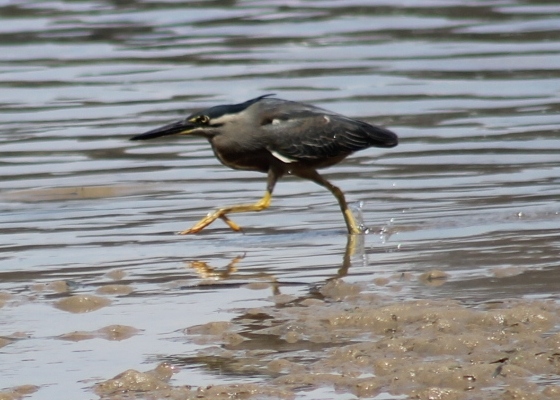 As part of the Environmental Education Strategy for NSW Coastal Boaters and Fishers, five marine clean up events have taken place in 2012 at various locations in the south and north, along the Hunter and Central rivers.
As part of the Environmental Education Strategy for NSW Coastal Boaters and Fishers, five marine clean up events have taken place in 2012 at various locations in the south and north, along the Hunter and Central rivers.
The coastal areas in NSW are: Northern Rivers CMA, Hunter Central Rivers CMA, Hawkesbury Nepean CMA, Sydney Metropolitan CMA and Southern Rivers CMA. Yesterday’s (8.12.2012) Clean Waterways focus on Careel Bay was funded by a grant from the Hawkesbury-Nepean Catchment Management Authority was the last of these. Bec Mooy tells us there will be further clean ups along the Hawkesbury in coming months and that McMaster’s SLSC has been funded by the HNCMA to do clean ups on the water.
The hope yesterday was to attract boating and fishing folk to the clean up as part of the focus was education. One sailor attending, a Pittwater resident and yachtsman on the estuary for a long time, found all sorts of bits off boats he could identify and even a cover for a light he could reuse.
For almost three hours these volunteers ranging in age from eight to eighty two worked side by side finding everything small and large that is polluting this beautiful bay, its mangroves and its creek.
While along the foreshore a Striated Heron, White Faced Herons, the Royal Spoonbill spotted a few weeks back, Australian Ibises and an Australian White Heron picked their ways 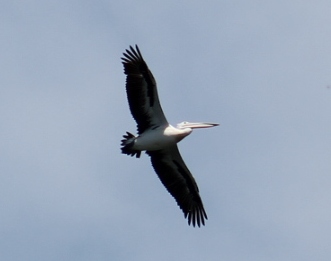 over the mangroves at low tide amongst plovers, Native Ducks and seagulls seeking fish. Above us an Australian Pelican circled majestically, riding a thermal higher and higher. Pelicans are an ancient symbol of change. Seeing this one watching the workers below bodes well for the future of New South Wales waterways if our Government continues to fund such initiatives and finds in our communities people who are more then willing to make a difference, to be those who are not so careless…or lazy.
over the mangroves at low tide amongst plovers, Native Ducks and seagulls seeking fish. Above us an Australian Pelican circled majestically, riding a thermal higher and higher. Pelicans are an ancient symbol of change. Seeing this one watching the workers below bodes well for the future of New South Wales waterways if our Government continues to fund such initiatives and finds in our communities people who are more then willing to make a difference, to be those who are not so careless…or lazy.
The Healthy Waterways Project has also included:
Healthy Waterways: Better boating, more fish
Click here to download the brochure.
The five Coastal Catchment Management Authorities (CMA) in partnership with the Boat Owners’ Association of NSW (BOA), Boating Industry Association of NSW (BIA), Recreational Fishing Alliance of NSW (RFA), NSW Maritime and Department of Primary Industries (Fisheries) are undertaking an Environmental Education Strategy for NSW Coastal Boaters and Fishers.
The aims of the project are to:
- Raise the awareness of boaters and fishers to key aquatic environmental issues.
- Encourage, if needed, changes in behaviour to reduce impacts on our aquatic natural resources.
- Identify aquatic champions among boating and fishing groups to be trained and deliver peer education
- Encourage individuals to “get involved” in aquatic habitat rehabilitation projects e.g. marine debris clean up days.
Healthy Waterways
The NSW CMAs are currently implementing community group presentations across Coastal NSW. The presentation highlights aquatic environmental issues and how boaters & fishers can help to reduce impacts on the aquatic environment. If you are a member of a boating and/or fishing club and would like to know how to organise a presentation to your group please contact the Sydney Metropolitan CMA on (02) 98957898 or email the Project Manager, John Naughton at John.Naughton@smcma.nsw.gov.au for further information.
BOATERS AND FISHERS PRESENTATIONS
One of the key educational outcomes of the project was the delivery of community group presentations across coastal NSW. The presentation format has been trialled with 5 major boating and fishing associations and refined to reflect comments and advice received. A SMCMA staff training day was held in August 2011 with a focus on tailoring community group presentations to reflect local aquatic environmental issues. Presentations across the 5 Coastal CMA regions commenced in November 2011.
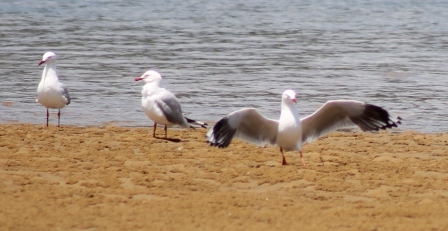 AQUATIC VOLUNTEERING: GENERAL INFORMATION
AQUATIC VOLUNTEERING: GENERAL INFORMATION
There are lots of volunteer groups around Sydney who work on improving the aquatic environment and have fun doing it. There are underwater diving groups and fishing groups who do monitoring, , marine debris clean ups and community awareness raising. There are Fishcare volunteers who are spreading the word about fish habitat issues and responsible fishing practices to anglers, community groups and schools. There is also the Fish Habitat Network where fishing groups actually do fish habitat rehabilitation work. There are also Bushcare groups working on saltmarsh and mangrove areas.
If you are interested in making a difference to the aquatic environment, and look for an aquatic volunteer group based on location (so that you can volunteer close to home) please click on the following link Find A Volunteer Group.
To find out more about becoming a Fishcare Volunteer visit: www.dpi.nsw.gov.au/fisheries/recreational/info/fvp
To find out more about the Fish Habitat Network visit: www.fishhabitatnetwork.com.au
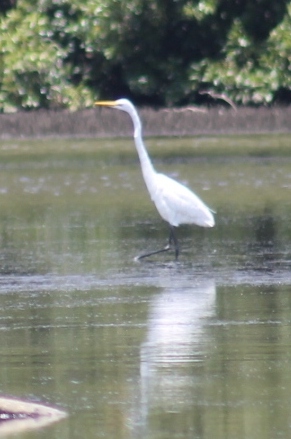 Sydney Metropolitan Catchment Management Authority has merged with Hawkesbury-Nepean Catchment Management Authority
Sydney Metropolitan Catchment Management Authority has merged with Hawkesbury-Nepean Catchment Management Authority
The NSW Government recently announced that the Sydney Metropolitan Catchment Management Authority has been merged with the Hawkesbury-Nepean Catchment Management Authority as part of the changes to the regional service delivery model.
From January, 2014 Local Land Services, a new regionally-based organisation will replace the Catchment Management Authorities, Livestock, Health & Pest Authorities and incorporate agricultural services currently provided by Agriculture NSW.
The Hawkesbury-Nepean Catchment Management Authority's area of operation now includes all the areas previously covered by the Sydney Metropolitan Catchment Management Authority. This website will now become an archived website. For more information about Hawkesbury Nepean Catchment Management Authority, and to find out about upcoming events visit www.hn.cma.nsw.gov.au
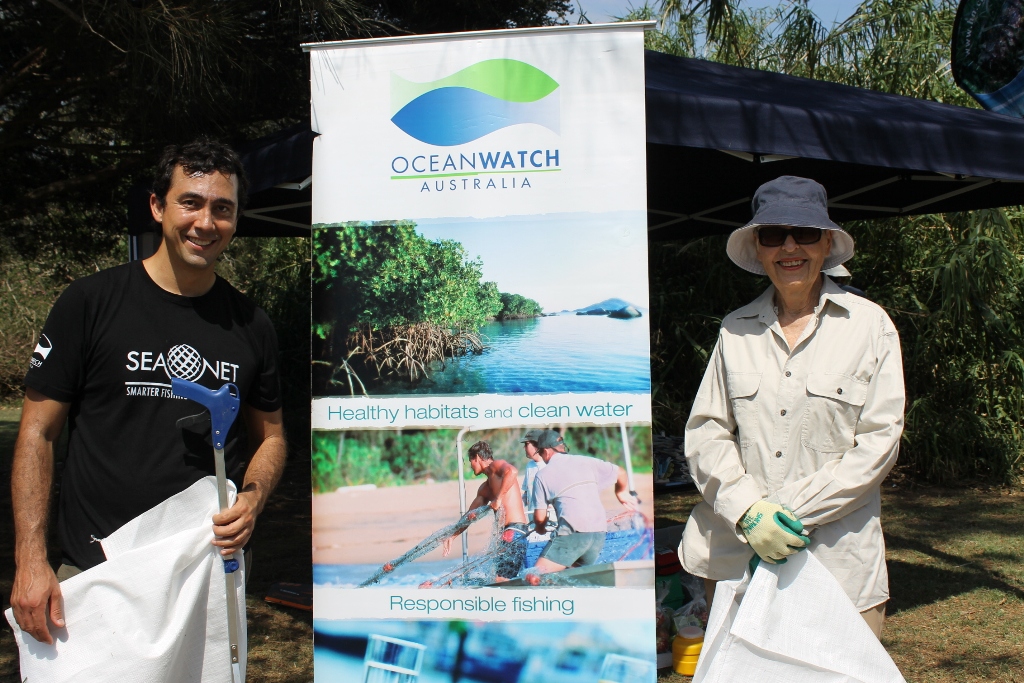
Eduardo Gallo and Careel Bay resident Nina Bardsley. Photo by A J Guesdon.
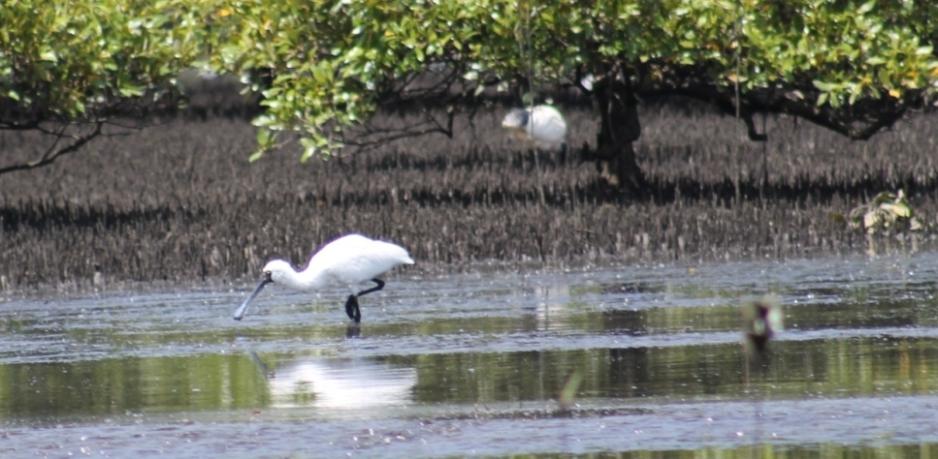
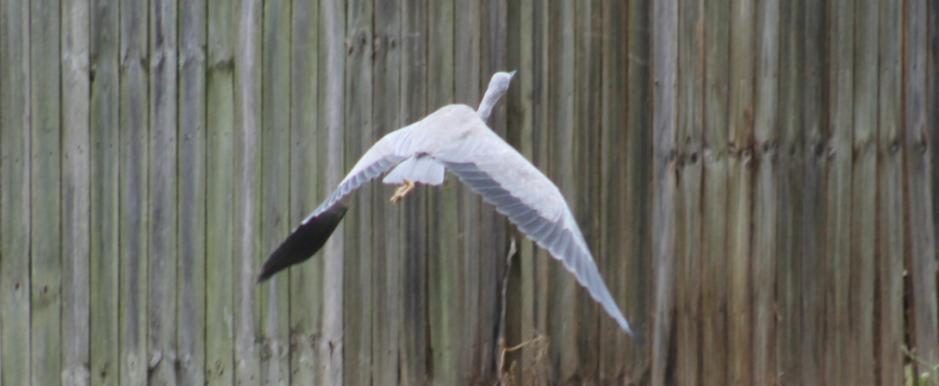
Asparagus Fern Out Day At Careel Bay
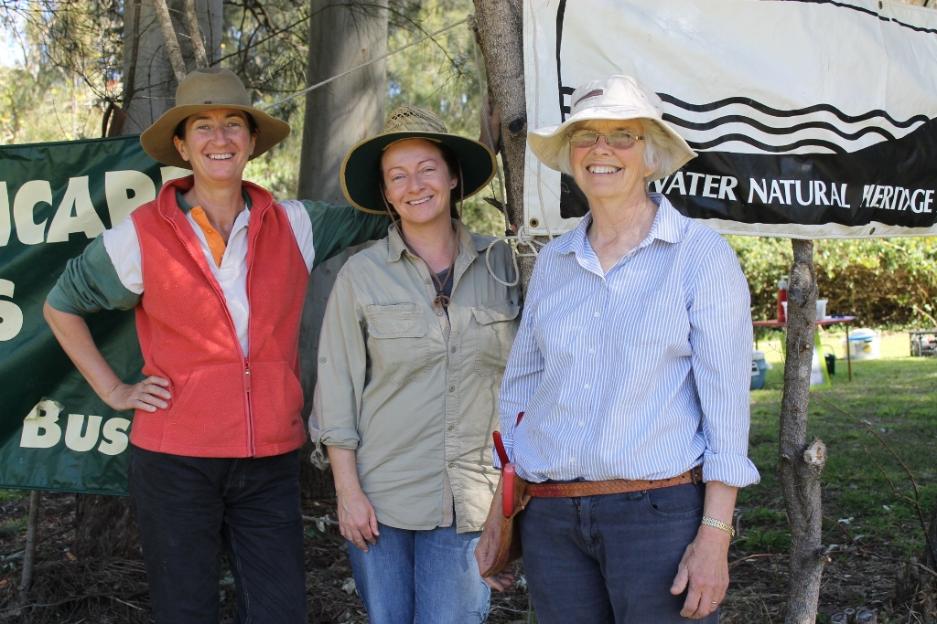
Pam Bateman, Noxious Weed Officer with Pittwater Council, Helena Dewis, Bushcare Officer Pittwater Coucnil, Marita Macrae - Pittwater Natural Heritage Association. Picture by A J Guesdon.
ASPARAGUS FERN OUT DAY – Careel Bay, 24th of August, 2013
Pittwater Council and the Pittwater Natural Heritage Association held one of their many bushcare sessions on the noxious weed, asparagus fern, at Careel Bay on Saturday afternoon. This plant is showing its winter-spring red berries at present, and these may be eaten by birds and spread its choking on our bushland and gardens even further. To get rid of it from your own garden or join one of the many bushcare groups in Pittwater to help them and yourself in eliminating weeds from our play reserves and bush areas, will stop its spread.
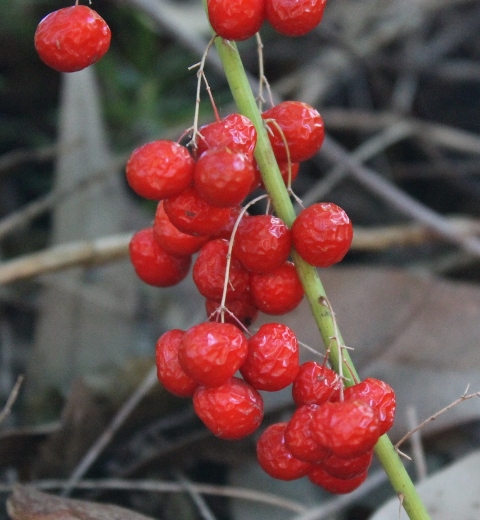 Like many plants now officially listed as weeds, asparagus fern was originally introduced to Australia as an ornamental plant well over 100 years ago with one variety used as a fashionable stem trail in everything from wedding bouquets to being a potted plant in regional shows garden competitions. Asparagus fern is now a serious weed of bushland and rainforests, covering many areas where native plants once flourished. An invasive root system means this plant will spread if not checked and total removal is recommended if you wish to see Native plants and animals return to the areas it has infested.
Like many plants now officially listed as weeds, asparagus fern was originally introduced to Australia as an ornamental plant well over 100 years ago with one variety used as a fashionable stem trail in everything from wedding bouquets to being a potted plant in regional shows garden competitions. Asparagus fern is now a serious weed of bushland and rainforests, covering many areas where native plants once flourished. An invasive root system means this plant will spread if not checked and total removal is recommended if you wish to see Native plants and animals return to the areas it has infested.
Caring for our bushland is one of the many ways you can contribute to and engage in community and Pittwater need all the hands she can get to return and keep our reserves of bush as we’d rather have them.
In Pittwater we have sand dune environments, wetland estuary environments, and remnants of bushland that remain attractive as a place to exhale simply because so many of us give time and energy to eradicating this weed or inhibiting its spread. To be able to picnic on ground where this spiky weed will not spoil your day out can only be a good thing and as ticks seem to thrive in the areas this weed prevails, getting it out of your garden may cut down on bites from this parasite as we head into summer.
Enviroweek commences today, and the Coastal Environment Centre is hosting the Youth Environment Congress the following week, September 3-5.
As Pittwater Council’s Natural Environment and Education Manager, Mark Beharrell said during the week this event brings together the community to conserve their environment.
“Residents can help remove this noxious weed, restore the area around Careel Creek and allow native plants in the area to regenerate,” he said.
Mr Beharrell said the yearly event always drew a committed crowd, with last year’s event having over 40 participants. This year numbers were down a little due to other working bees in the area but those who did attend still managed to make inroads on Careel Bay’s asparagus fern. A sausage sizzle, a cooling breeze and great company made a few hours of toil a worthwhile endeavour.
The Council is being supported in its campaign against asparagus fern by a Caring For Our Country Grant through the Hawkesbury Nepean Catchment Management Authority and by the Pittwater Natural Heritage Association. Pittwater Council provides training, tools, gloves and afternoon or morning tea for its bushcare volunteers. Participants are asked to wear sturdy covered shoes, a hat, long sleeves and bring a drink with them.
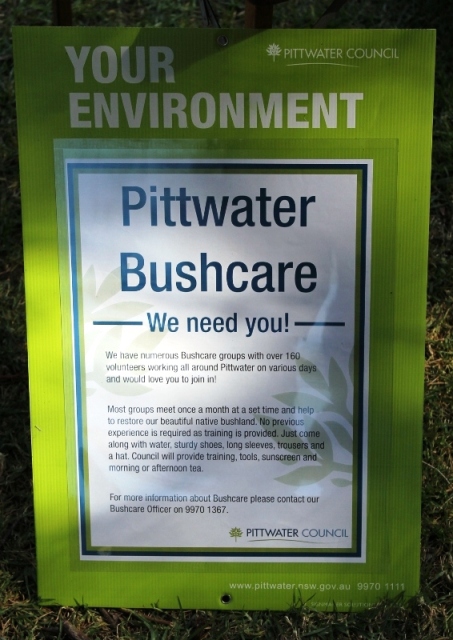 For further information about Pittwater’s many Bushcare Groupsplease call Council’s Bushcare Officer on 9970 1367 or emailhelena_dewis@pittwater.nsw.gov.au
For further information about Pittwater’s many Bushcare Groupsplease call Council’s Bushcare Officer on 9970 1367 or emailhelena_dewis@pittwater.nsw.gov.au
You can also see how easy it is to remove this prickly usurper in Pittwater resident's John and Lyn Illingsworth's 'Asparaus Fern removal' video below.
Or Manually:
The growing points of Asparagus Fern must be removed below the surface. The numerous water tubers can be left in the ground, as they contain no food and the plant cannot reproduce from them.
Wear thick gloves. With secateurs cut off stems about 20cm above soil level and bag. Don't cut too low or you may lose sight of where the crown is.
Larger berries will ripen if left lying on the ground.
Check where stems join crown.
Use knife, peter lever or mattock to cut around crown to sever roots and water tubers. These may be left in place. Lift out crown, checking it is entire and bag.
Follow up: seed lasts a few years in the soil, so you need to watch out for seedlings. Use a knife to ease these out - usually the whole plant will come up easily. Seedlings may sprout where you have removed larger mature plants.
Enviroweek News is on both Youth and Children’s pages this week.
The Youth environmental congress “Youth Leading the World”is coming to the Northern Beaches again. Run by non-profit organisation OzGREEN in partnership with Pittwater and Warringah Council, the congress will be held at the Coastal Environment Centre, Narrabeen, 3 - 5 September 2013, 9am to 3pm. Young people aged 12 to 25 years are invited to attend the interactive, hands-on congress for free. Just bring along a keen interest in environmental and social issues and the passion to make a difference. Now in its fifth year, “Youth Leading the World” is run simultaneously in over 90 locations in Australia and overseas, connected by digital media.
Participants will explore local and global environmental challenges; measure and understand their own eco-footprint; and work on action plans for more sustainable living at home, at school and in their community. For more information contact Ann-Charlott Paduch, OzGREEN Northern Beaches coordinator, atapaduch@ozgreen.org.au or 0439 981 035 and visit www.ozgreen.org.au.
Asparagus Fern – from Trove
ASPARAGUS FERN. ‘'Asparagus' (Mile-End) -writes: — 'Can you help me out with my asparagus fern? It is growing all along the front verandah, but has not been trained up too evenly being too thick in places and too thin in others. It is right up to the roof and hanging over, 'and is probably 10 years old. Could it be cut back within 3 or 4 ft. of the ground? If this would not hurt the fern it would then be possible to put wire 'netting to train it more evenly. What, then, would be the best to do where the ferns are crowded? Can tbe roots be divided and transplanted? At present it is covered with berries, but not showing much new growth. Thanking you in anticipation for your valuable advice.
'To 'Asparagus,' — The best thing you can do is to cut the plant back right to the ground. It will not hurt the plant at all and you will get fresh growth right from the bottom. ' IF you cut back to4 ft. from the ground you will still have a lot of old tangled stems.— 'Greenleaf.' ASPARAGUS FERN. (1913, August 16). The Mail (Adelaide, SA : 1912 - 1954), p. 11. Retrieved from http://nla.gov.au/nla.news-article63803685
Class C—Pot Plants. Prize 2s 6d One fern, Miss Hodge: One asparagus fern, Miss Hodge. Class C—Pot Plants. (1904, November 5). The Wyalong Advocate and Mining, Agricultural and Pastoral Gazette (NSW : 1900 - 1928), p. 2. Retrieved from http://nla.gov.au/nla.news-article108535471
One asparagus fern, Miss Connie Bubeck 1, H. C. Just 2. CLASS G. POT PLANTS. (1900, November 24). Sunbury News(Vic. : 1900 - 1910), p. 3. Retrieved from http://nla.gov.au/nla.news-article66880916
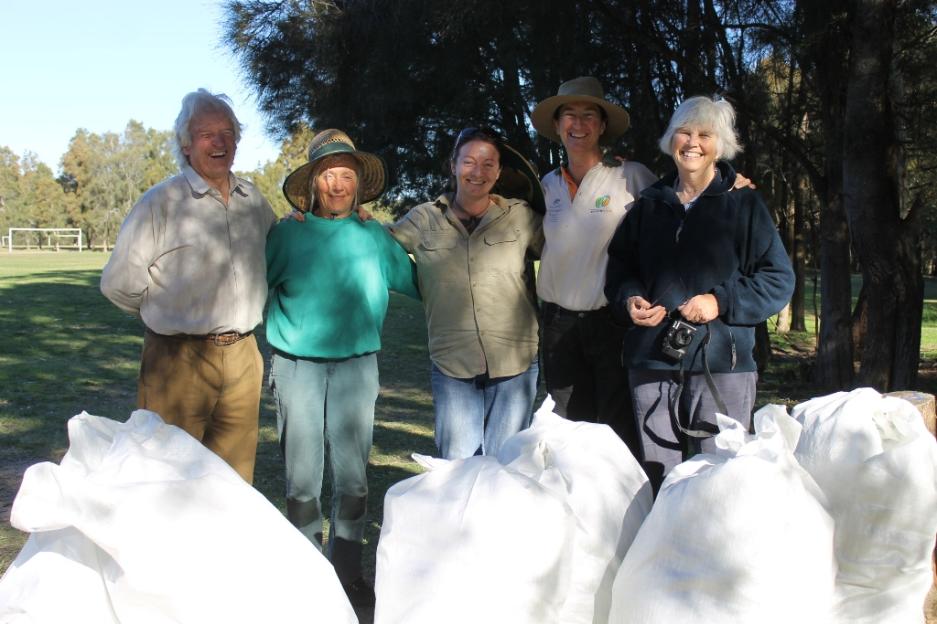
John Jenkins, Margaret Richardson, Pam Bateman, Helena Dewiss and Marita Macrae. Picture by A J Guesdon.
REMOVE ASPARAGUS FERN, PITTWATER ECOWARRIORS
Restoring Wetlands Near Careel Bay Final Field Day: May 2019
The Careel Creek Bushcare group with council Bushcare Officer Karin Nippard
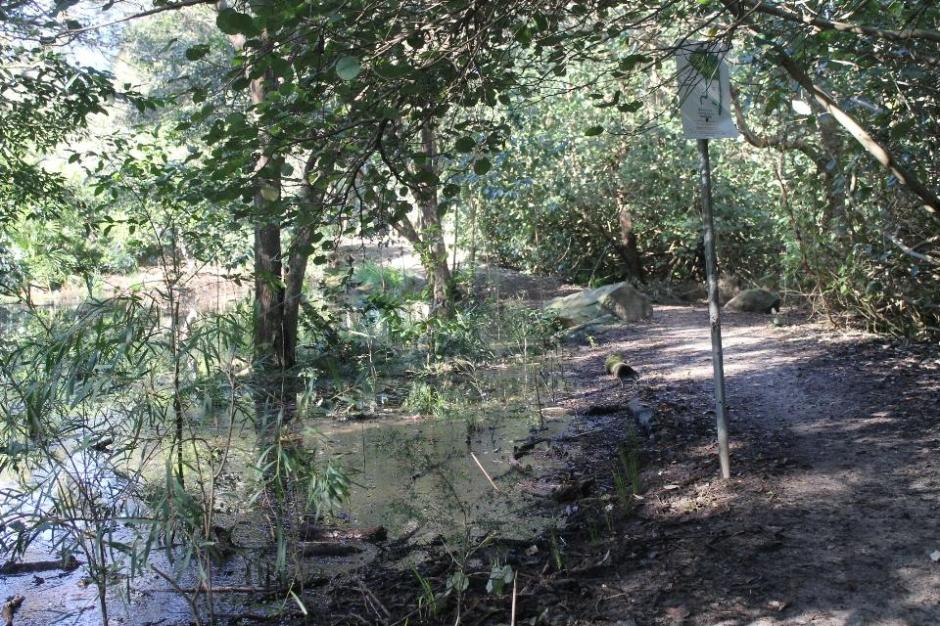
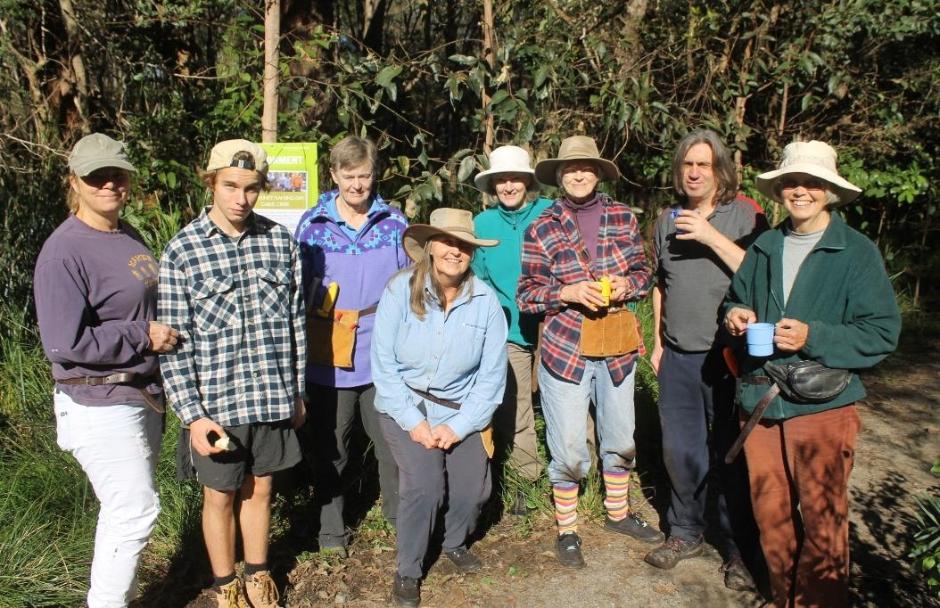
Bushcare planting at Careel Bay - Etival Street Planting Day 27.6.2015 - Front Page Issue 220
On Saturday June 27, 2015 volunteers helping the Pittwater Natural Heritage Association, in conjunction with Council, at a Community Planting Day were finishing planting out an area at the north end of Careel Bay playing fields beside the dog exercise area and on to the corner of Etival street.
Sydney Freshwater Wetlands Project
A grant to PNHA from Greater Sydney Local Land Services funded some of this transformation, in partnership with Northern Beaches Council.
This project, commenced in April 2018, has removed weeds and installed a habitat corridor from the bay to the creek. The last Field Day was Saturday May 25th, when a Buff Banded Rail, the first one seen here for decades, was spotted.
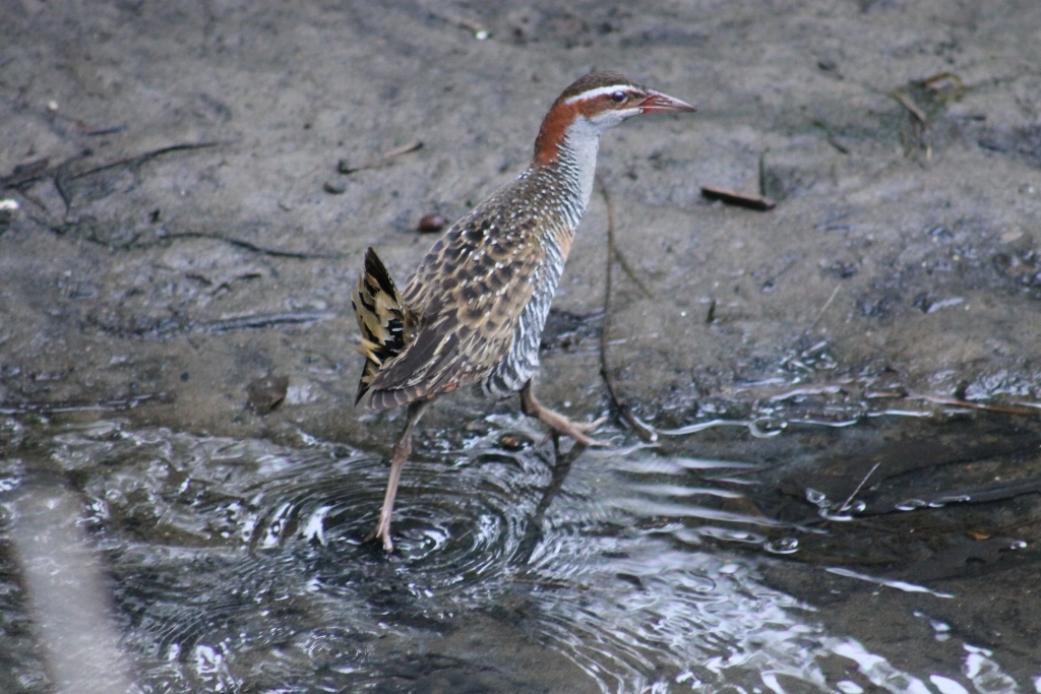
Buff-banded Rail (Gallirallus philippensis)
No greater illustration of what restoration of our waterways and bushland can do is demonstrated in the return of native species and fauna. The wetland area was overrun with weeds, but extensive planting of native plants has transformed it.
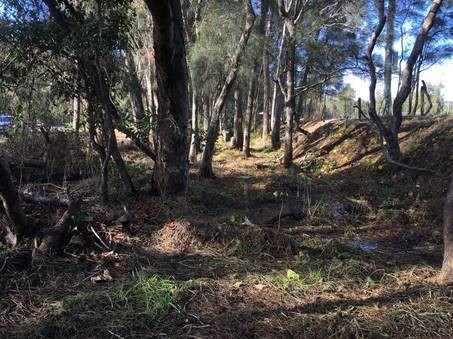
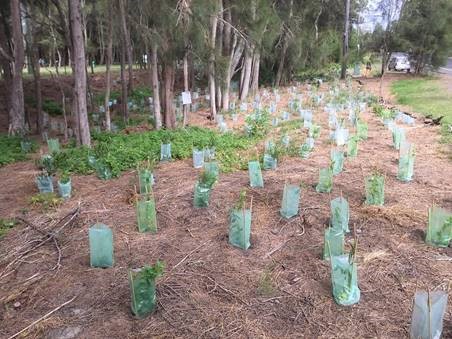
Site cleared of worst weeds mid 2018 by contractors funded by the grant. The same area planted late 2018, protected against rabbits.
Sydney Freshwater Wetlands are an endangered ecological community, hence the funding, most of which went to other remnant Wetland areas around Sydney.
Some native plants part of Sydney Freshwater wetlands would be Eucalyptus robusta - Swamp Mahogany, paperbarks such as Melaleuca linariifolia and Melaleuca ericifolia, Sword Grass - Gahnia sieberana and the sedge Carex appressa. The group have planted other native shrubs on drier land around the wetter areas.
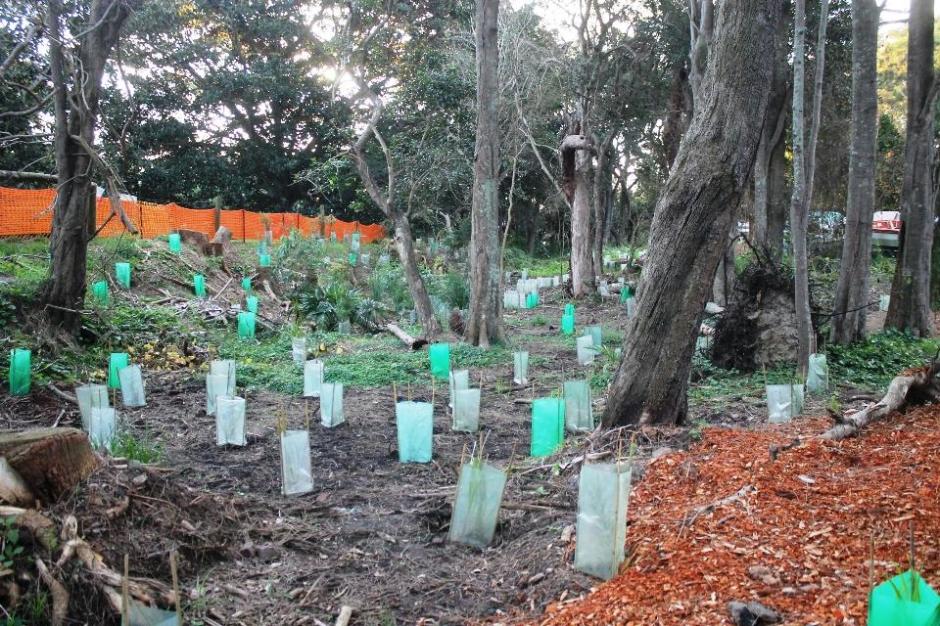
The Field Day held on Saturday May 25th was the last for this project, now completed. The only other grant PNHA have in progress at present is for the saving of Grevillea caleyi in the Baha'i temple area, at Ingleside, managed by Office of Environment and Heritage, OEH, with PNHA and Baha'i volunteers also meeting there once a month.
The location beside Barrenjoey Rd is adjacent to some of the work done under the PNHA Careel Creek Vine Weeds grant completed early this year. Vines, native and introduced, can damage Bushland specially along damp areas such as Creek lines, by breaking down trees and smothering smaller plants.
Careel Creek Vine Weeds Project
This involved work along Careel Creek from north Avalon down to near the tennis courts, and other spots around Careel Bay as at end of John St Avalon.
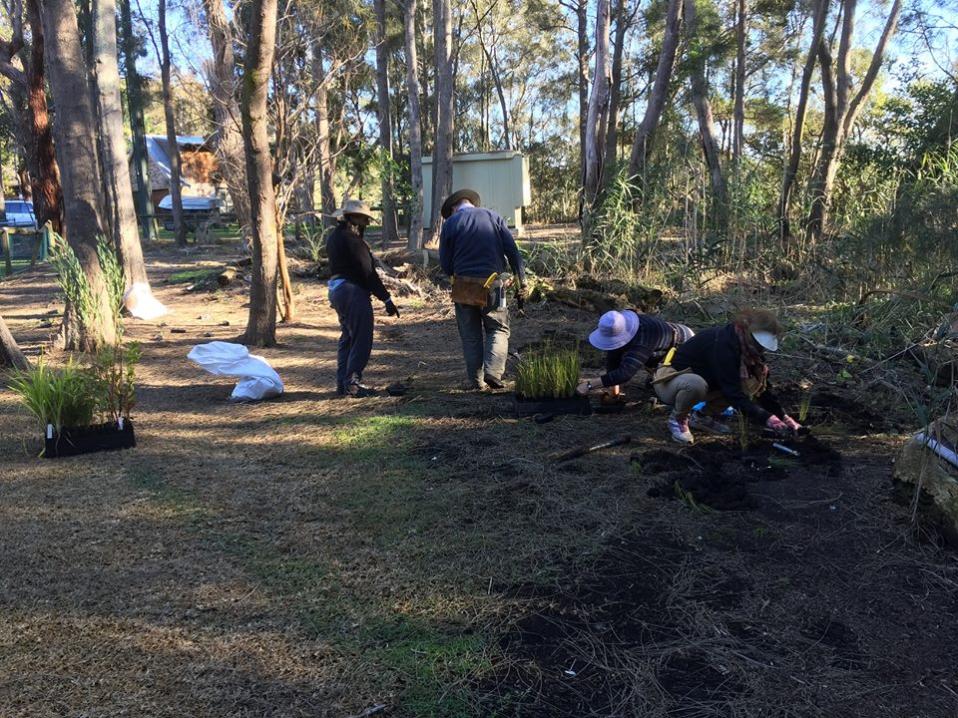
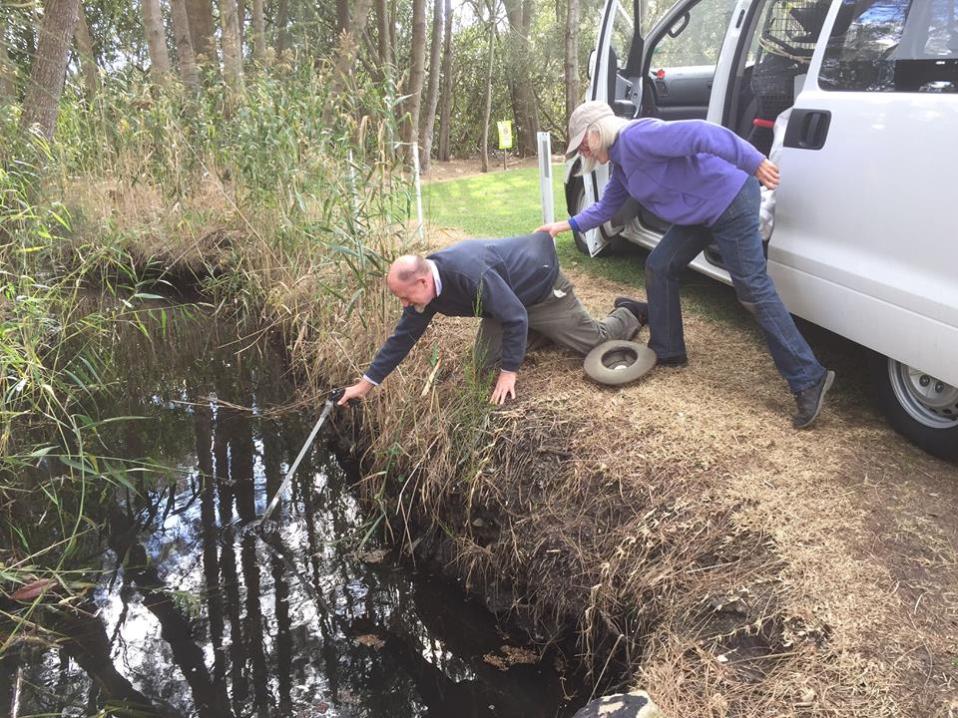
This volunteer was really determined to get cigarette butts out of the creek.
As part of this project PNHA published a booklet about vine Weeds, available in hard copy and on their website, PNHA.org.au Both were community grants to PNHA from Greater Sydney Local Land Services, which allocates funds from the Federal Government.
When PNHA are about to apply for a grant for bush regeneration they consult with Council Bushland management staff about where money is needed for bush regeneration. If council is already spending on work in that area, that is counted as in-kind contribution to the project, a necessary condition for receiving grant funds.
An important requirement of grant funded projects is to involve the community, in the first instance Careel Creek bushcare group. The Pittwater Natural Heritage Association undertake some publicised Field Days on those bushcare days inviting the community along to take part. They also undertake to share information about each project so people can see the what, why, and how these changes are taking place.
National Volunteer Week 20-26 May 2019, has a theme this year of “Making a world of difference”.
What better way to close this week in a place where practically everyone does something for others than an insight into a the work that has been undertaken by these volunteers which has definitely made a world of difference for some years now.
Volunteers are still needed for maintenance and weeding along the creek once a month for a few hours - a great way for Duke of Edinburgh Award students to contribute a few hours once a month or any others with a will to see their own volunteer hands get busy and actually get to see the changes they have made grow.
Good company and a great morning tea are always provided!
With current dry conditions hand watering is required for these new plants so they all get a good soak. As the volunteers have put in lots of native ground cover, hand weeding is required, not weed spraying.
The Careel Creek bushcare group meets on the fourth Saturday morning of each month from 8.30 to about 11.30. Contact Karin Nippard, Northern Beaches Council Bushland Management Officer, on 0417 040 945 to find where the group will work each month.
Careel Creek days coming up are: June 22, July 27, August 24, September 28, October 26, November 23.
Melaleuca ericifolia
Typha
Persicaria decipiens
Marita Macrae, Pittwater Natural Heritage Association and Karin Nippard, Northern Beaches Council
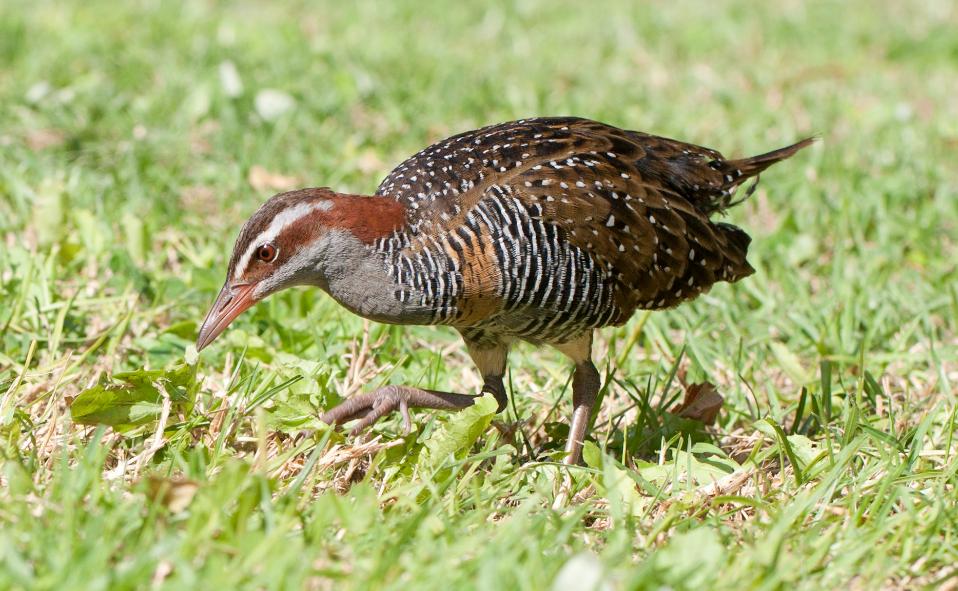
Buff-banded rail(Gallirallus philippensis) - photo by Toby Hudson